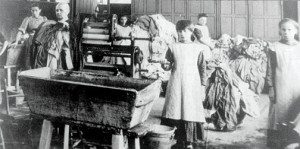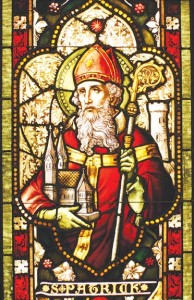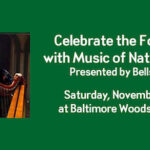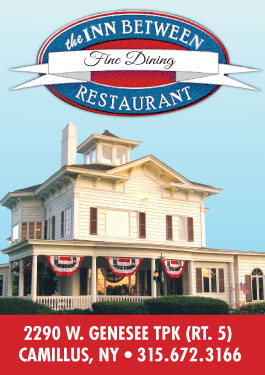Here and There
March 17 is St. Patrick’s Day. I believe that the Irish in Ireland celebrate St. Patrick’s Day as a religious feast. Here, we celebrate St. Patrick’s Day with revelry.
 I am of Irish ancestry, 64% according to Ancestry DNA.com. I have always participated in St. Patrick’s Day celebrations, wearing green and donning harp, shamrock and pot of gold regalia. Still, I did not know much about St. Patrick himself so I figured, this year, I will look him up. A couple histories suggest little history is known. I have a number of books about Ireland, its culture, and the power and public policy shifts that wracked the people. One of the newer books is a history of the Magdalen Laundries, a more recent system that swallowed many girls, women, and infants and many forever. Boston College Professor James M. Smith’s “Ireland’s Magdalen Laundries and the Nation’s Architecture of Containment” paints a disturbing picture of how good intentions go bad in enmeshed systems involving church and state. Likewise, Nell Bernstein’s book, “Burning down the House,” describes the mid-1800’s roots of our nation’s industrial school system into which the not yet Americanized children of immigrants were funneled supposedly for their own protection and benefit. The children, mostly boys, often provided unpaid labor for ostensibly civic-minded manufacturers. Around the same time, religious orders operating Magdalen asylums in Ireland opened convents here. In 1926 in Baltimore, authorities secured 11-year-old Billie Holiday in a convent for her protection.
I am of Irish ancestry, 64% according to Ancestry DNA.com. I have always participated in St. Patrick’s Day celebrations, wearing green and donning harp, shamrock and pot of gold regalia. Still, I did not know much about St. Patrick himself so I figured, this year, I will look him up. A couple histories suggest little history is known. I have a number of books about Ireland, its culture, and the power and public policy shifts that wracked the people. One of the newer books is a history of the Magdalen Laundries, a more recent system that swallowed many girls, women, and infants and many forever. Boston College Professor James M. Smith’s “Ireland’s Magdalen Laundries and the Nation’s Architecture of Containment” paints a disturbing picture of how good intentions go bad in enmeshed systems involving church and state. Likewise, Nell Bernstein’s book, “Burning down the House,” describes the mid-1800’s roots of our nation’s industrial school system into which the not yet Americanized children of immigrants were funneled supposedly for their own protection and benefit. The children, mostly boys, often provided unpaid labor for ostensibly civic-minded manufacturers. Around the same time, religious orders operating Magdalen asylums in Ireland opened convents here. In 1926 in Baltimore, authorities secured 11-year-old Billie Holiday in a convent for her protection.
In interviews, Billie describes being locked in dungeon like cell. She escaped a year later. Hearts, bodies and minds break both in the streets and in institutions designed to save them from the streets. Substance abuse often follows. Billie Holiday soared musically but succumbed to grief, addiction and despair. Based on his own autobiography or “confession,” Patrick was born in the Fifth Century, of wealthy Christian Celtic parents in Britain, was kidnapped and taken as a slave to Ireland where he more fully embraced Christianity. He prayed, began to hear either disembodied voices or God’s voice revealing to him an escape plan. Escape he did. Patrick eventually returned to Ireland where he worked to Christianize the Irish, free and improve the lot of slaves and women, and discourage warfare among the Irish kings. Popular lore depicts St. Patrick driving the snakes from Ireland. Various sources insist there have never been snakes in Ireland. The National Geographic site indicates that ocean temperatures near Ireland would not support snake life and that the story is likely symbolic. While Judeo-Christian religions often equate snakes with evil, other traditions associate snakes with wisdom. The pagan Celts originated near Asia Minor migrating north and west through Europe arriving in Ireland around 800 BC. Celtic jewelry and art includes spiral imagery, animals and snakes. National Geographic suggests the term snake might mean evil or might refer to pagans themselves. The Book of Kells, a hand copied and illustrated version of the four canonical Christian Gospels includes beautiful ornate bird, animal, and snake imagery. Christian monks worked on the Book of Kells around 800AD on Iona, an island off the Scottish coast. Vikings invaded Iona forcing the monks into Ireland where they finished the book.
Ancestry DNA.com reports my next largest DNA group as Scandinavian, followed closely by that of Great Britain – all areas populated early on by Celts. Being the last stop before the Atlantic and an island, Ireland found itself often invaded and often by Scandinavian Vikings. Many believe the Vikings may have explored the northeastern coast of North America long before Columbus set sail. People travel. Many geneticists believe that all human life descended from a single DNA pool originating in Africa. Our ancient mitochondrial mother, “Eve,” named for Biblical Genesis Eve, lived around 200,000 years ago. Many “people of the book” blame Genesis Eve for the fall of man. Genesis states Eve listened to a talking snake in Eden. The snake told her to go ahead and eat of the forbidden tree of knowledge at the center of the garden. Eve ate, offered Adam a bite, he ate, and suddenly they saw that they were naked. Did they suddenly judge each other for being naked? How nakedness became synonymous with a fallen state rather than a natural state has less to do with our origins than how some teachers would have us think about our origins. The book, “101 Things You Didn’t Know about Irish History” states that Patrick “found slavery to be very bad for women (his respect and concern for women made him very unusual among early medieval leaders.)” Slainte’! Happy St. Patrick’s Day.











